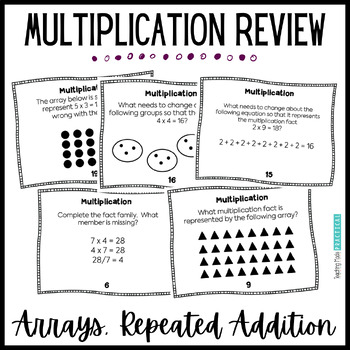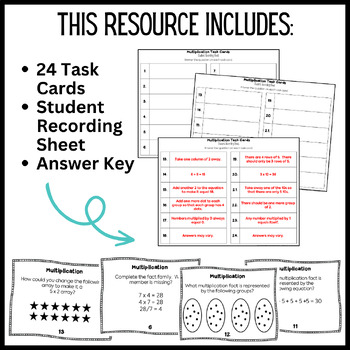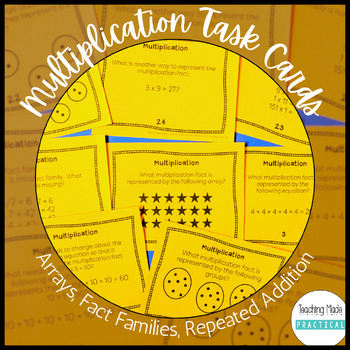Multiplication Task Cards- Arrays, Repeated Addition, Fact Families, Groupings
- PDF
What educators are saying
Description
This resource has 24 multiplication task cards that allow students to show their knowledge of how to represent multiplication facts in different ways (arrays and repeated addition, for example). In order for students to be successful with these multiplication task cards, they should be familiar with:
- Representing multiplication through arrays
- Multiplication and division fact families
- Representing multiplication through repeated addition
- Representing multiplication through groupings
You can also differentiate these multiplication task cards if necessary. The first 12 cards require basic knowledge questions about different representations of multiplication, while the last 12 cards require a higher level of thinking about different representations of multiplication.
An answer sheet and answer key are included.
This makes a great review or extra practice for 3rd grade and 4th grade students.
You might also like:
Comparing Fractions: Using 1/2 as a Benchmark
Kalena Baker, Teaching Made Practical





